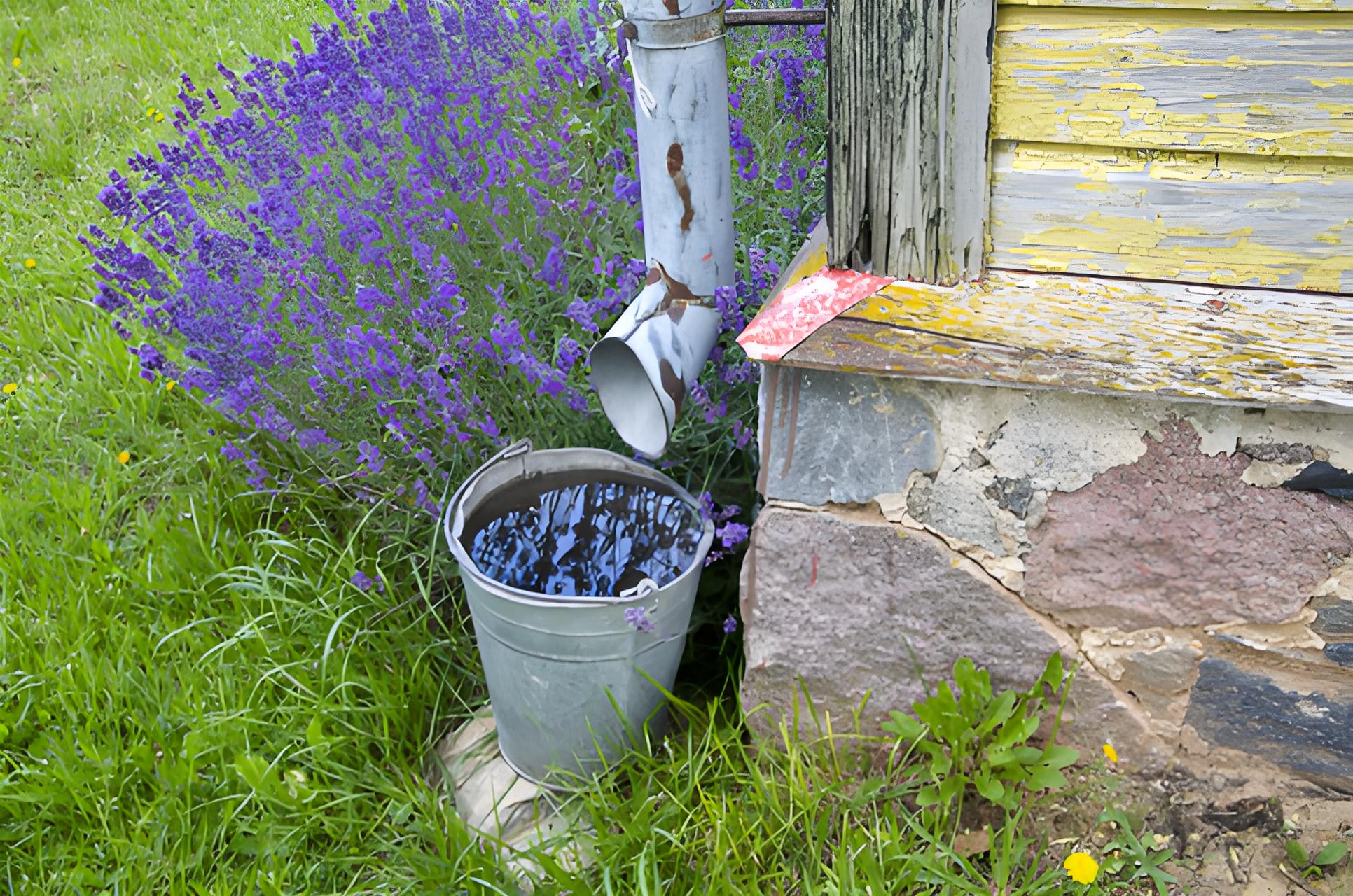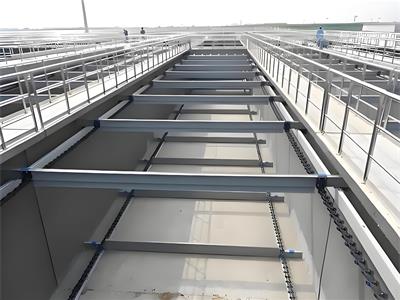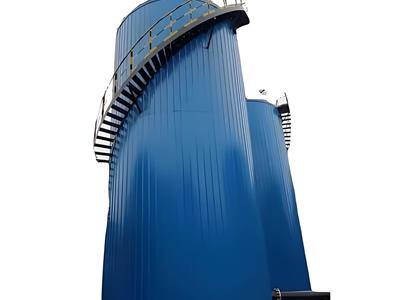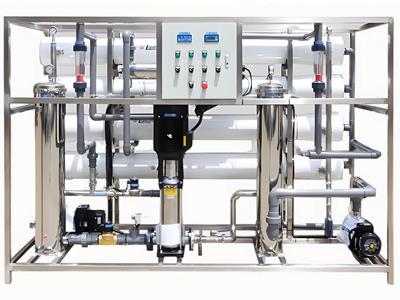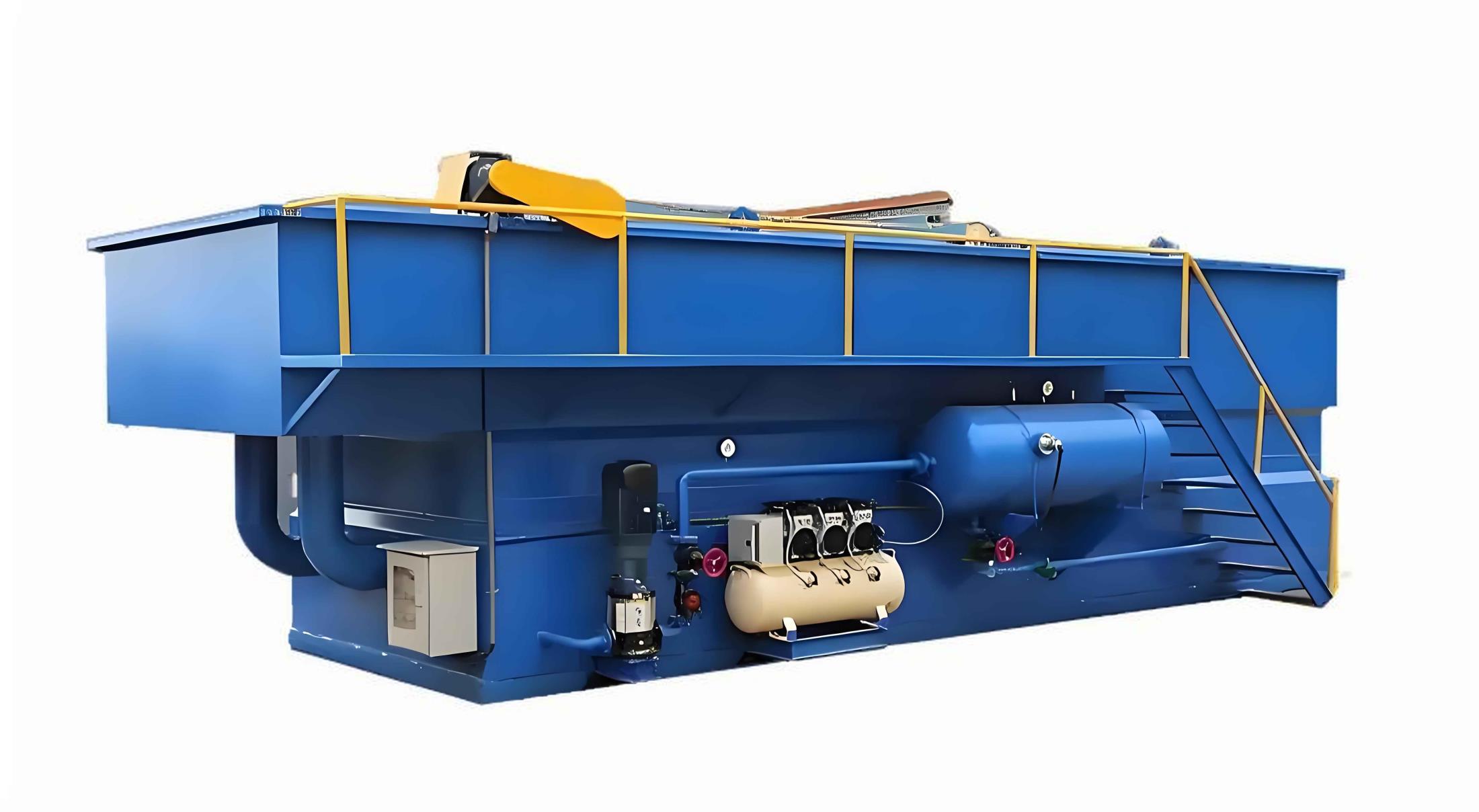- 2025-07-25
How to collect rainwater and make it safe to drink?
There is limited fresh water on Earth, but rainwater, like rivers and seawater, can be drunk after treatment. Rainwater treatment solutions are common in residential buildings and can provide clean water to families economically. If you are interested in collecting and purifying rainwater, this article will give you the answers you want!
1. Is rainwater safe to drink? What does rainwater contain?
Untreated rainwater cannot be drunk directly. Rainwater is formed when water in surface water, vegetation and soil evaporates and condenses into large enough raindrops that fall to the ground.
In this process, rainwater may carry chemicals, particulate matter, dust, bacteria, viruses, air pollutants, PFAS (perfluoroalkyl compounds), carbon dioxide, nitrogen, etc., and may be acidic. In addition, the way rainwater is collected will also affect its quality, and it may be mixed with impurities such as bird droppings, sand, soil, leaves, branches, insects, etc.
2. Disadvantages of drinking rainwater directly
Rainwater contains various potential heavy metal pollutants and microorganisms, and drinking it directly may cause food poisoning and viral infection. Unfiltered rainwater contains coarse particles such as sediment, which will affect the taste and may damage the mouth and intestines.
In addition, everyone knows that rainwater is acidic because it contains carbonic acid, sulfuric acid and nitric acid. These acidic substances will corrode the mucous membranes of the mouth, esophagus and stomach, and may increase the level of stomach acid. The decrease in intestinal pH will affect the body's absorption of calcium and cause bones to become fragile. Therefore, it is not recommended to collect rainwater directly for drinking.
3. What are the benefits of making rainwater into drinking water?
In remote areas with scarce water resources, they are threatened by drought all year round, and precipitation is mainly concentrated in summer, so energy and water resources need to be conserved. In addition, outdoor sports enthusiasts and disaster prevention personnel often have difficulty in obtaining drinking water. Rainwater, as a natural resource, is easy to collect and can be used as domestic water after treatment.
Rainwater has low hardness. Collecting and treating enough rainwater can meet various needs, such as drinking, cooking, bathing, flushing toilets, irrigating plants, washing cars and emergency rescue. The biggest advantage of collecting and using rainwater is that it is cost-effective and can reduce water expenses. In addition, this method can reduce soil nutrient and water loss, replenish groundwater, enhance the ecological health and sustainability of the land, and help protect the environment.
4. How to collect rainwater for drinking?
There are many ways to collect rainwater. Before you delve into rainwater collection, be sure to consult experts and local government departments to understand the regulations and guidelines for rainwater collection in your area. Some areas may have restrictions on collecting and using rainwater in order to manage and protect water resources. For example, Colorado, Singapore, Australia, and some Middle Eastern countries or regions have introduced relevant regulations. In addition, some communities may prohibit individuals from collecting rainwater because of concerns about the safety of untreated rainwater.
Rainwater collection systems generally consist of a catchment area, a conveying system, and a rainwater storage facility. Collecting rainwater for drinking is actually quite simple, and you can even do it yourself. The most common method is to use a roof drainage system to collect rainwater, and then direct the rainwater through gutters or downspouts to store it in a rain barrel with a screen. However, it is critical to regularly clean and properly seal the containers that store rainwater to prevent contamination and safety hazards, especially when children and pets are at risk of falling into them.
If there is no gutter, you can also use rain barrels to collect rainwater flowing from the roof. Alternatively, you can build a ground rainwater collection pit and set up a slope to direct rainwater to a centralized collection point for storage.
5. How to make rainwater drinkable?
After the rainwater collection system collects rainwater, if the goal is to filter it for drinking, it must go through the following three steps:
(I) Pre-filtration
We recommend using a mesh screen to remove debris such as branches and leaves when collecting rainwater. After the collected rainwater is stored and left to stand, solid particles can settle to the bottom of the water, reducing impurities in the water. However, even after preliminary treatment, there may still be larger particles, colloids, colors and odors in the rainwater, which must be removed before further filtration.
We recommend the use of a pre-treatment system, including sand filtration to remove larger particles and sediments, activated carbon filters to remove odors and colors, and PP filters to further remove larger suspended particles. Alternatively, you can also consider using a microfiltration or ultrafiltration system for more precise pre-treatment filtration.
(II) Disinfection
Rainwater contains various harmful bacteria, viruses, fungi and other microorganisms, so the treated drinking water must be disinfected. Ultraviolet disinfection and chlorination disinfection are the recommended methods to kill microorganisms.
Ultraviolet sterilization system is the most commonly used physical disinfection technology. It uses high-energy ultraviolet rays to destroy the DNA structure of microorganisms, prevent their replication and growth, and finally kill the microorganisms.
Chlorination can also treat rainwater, but the operation is risky and may have adverse effects on human health, so it is not widely used.
(III) Advanced filtration
Rainwater treated in the first two steps can be used for car washing, bathing, irrigation, etc., but cannot be drunk directly. Simple coarse filtration and disinfection cannot remove soluble salts, microorganisms, heavy metals and harmful chemicals, so further fine filtration is required.
Nanofiltration system: The filtration accuracy of nanofiltration is 0.01 microns. If the rainwater quality is originally good, the nanofiltration system can improve the water quality to drinking water standards after pretreatment and disinfection. However, it is best to test the rainwater quality to ensure that it meets local drinking water standards.
Reverse Osmosis System: The RO filtration accuracy ranges from 0.1 nanometers to several nanometers. Rainwater passes through the pores of the reverse osmosis membrane under pressure, which can effectively remove most of the heavy metals, salts, residual chemicals and microorganisms in the pretreatment stage, and the water quality is clean and can be used for cooking, bathing and drinking.
6. Are there other ways to naturally purify rainwater for drinking?
There are indeed other ways to treat rainwater, such as distillation. Distillation is to heat rainwater to boiling point, collect water vapor, and then condense the water vapor into water. This process can effectively remove other impurities and pollutants, and finally obtain pure distilled water suitable for drinking.
However, the distillation process is relatively complex, energy-intensive and costly, so it is not suitable for treating large amounts of water. Distillation systems are usually not the first choice for treating drinking rainwater.
7. What is the best rainwater filtration system?
When choosing the best rainwater filtration system, you need to consider the content of pollutants in the rainwater and the intended use of the filtered water. You can determine the required filtration level based on the type and concentration of pollutants in the rainwater, and then design and select the most appropriate filtration method within your budget.
Taking these factors into consideration, we recommend several rainwater treatment solutions:
Sedimentation filter: This system can remove some larger suspended particles and is suitable for scenes with limited budget and relatively low water quality requirements, such as construction sites, landscape irrigation, ground cleaning, crop irrigation, aquariums, etc., but is not suitable for treating drinking water.
Sedimentation filtration + sand filtration + carbon filtration: This system is suitable for scenes with higher water quality requirements, such as car washing, irrigation, non-drinking cleaning, etc. After preliminary filtration, rainwater can further remove suspended particles, colloids, odors and some microorganisms in the water. The system has a relatively low cost and is easy to operate and maintain.
Sedimentation filtration + sand filtration + carbon filtration (+ ultrafiltration/microfiltration) + ultraviolet disinfection system: This system is suitable for scenes with relatively clean water quality requirements, such as bathing, washing vegetables, washing dishes, industrial and commercial cooling water circulation, etc. Compared with reverse osmosis technology, this system is more economical and can remove microorganisms and larger suspended particles in the water to improve water quality. However, it cannot guarantee that the produced water meets the drinking water standards. It is recommended to test the rainwater quality before use and consult professionals for technical advice.
Sedimentation tank + sand filtration + activated carbon filtration (+ ultrafiltration/microfiltration) + ultraviolet disinfection system + nanofiltration/reverse osmosis system: This system is suitable for occasions with high water quality requirements, such as when water needs to be converted into fresh water. It can treat heavily polluted rainwater and produce sufficiently clean and safe direct drinking water, but the corresponding cost is also higher.
8. How to maintain the rainwater system
Like many water treatment systems, the rainwater filtration system must be maintained regularly to ensure the quality and efficiency of the water produced. You need to regularly clean the roof drainage system, sedimentation tanks and water storage tanks, and regularly check and maintain the water pump and disinfection system. The filter element of the filter is generally replaced every 3-6 months. If a reverse osmosis system is used, the membrane element is usually replaced every 2-3 years.
Small rainwater filtration systems can be operated according to the installation manual and maintenance instructions provided by the supplier. For large-capacity rainwater treatment systems, the supplier may need to provide installation guidance or on-site maintenance services.
9. Conclusion
Converting rainwater into drinking water is conducive to green and sustainable development, which is good for both humans and the environment. Rainwater filtration systems can efficiently recycle rainwater for home, outdoor and RV use. If you need a rainwater solution or have a large project, you can contact Fupeng Environmental Protection Company's engineers for professional guidance.
10. FAQ
1. How hard is rainwater?
Rainwater is condensed from water vapor and does not pass through soil or rock formations during its formation and descent, so the mineral content of rainwater is usually lower than that of surface water and groundwater. In other words, rainwater is naturally soft water with low hardness.
2. Can rainwater be drunk after boiling?
In an emergency, you can boil rainwater for a few minutes and drink it directly. Boiling is a natural way to filter rainwater and can effectively kill most microorganisms. However, rainwater can easily be contaminated during collection and storage. To ensure water safety, it is recommended to test the rainwater quality to see if it is suitable for drinking. It is best to filter and disinfect rainwater before drinking to ensure that the water produced is clean enough.
3. How to filter rainwater for plants?
Using rainwater to irrigate plants can reduce water bills and maintain ecological balance. First, you need to understand local environmental standards and plant growth needs. A common treatment method is to collect rainwater from the roof and store it in a water tank. After filtering and settling through a filter, rainwater treated by a carbon filter and a sand filter can generally be used to water plants and gardens.
The water quality required for plant irrigation should be clean, at a suitable temperature, and have a neutral pH value. Using activated carbon and sand filters can effectively remove large particles, odors, colors, and some dissolved organic matter in rainwater to ensure plant safety. In addition, some plants require specific nutrients, such as nitrogen, phosphorus, and potassium. In order to ensure the healthy growth of plants, it is recommended to collect rainwater with a filter and clean and disinfect the water tank regularly.
4. How to filter outdoor rainwater?
There are some challenges in collecting and storing rainwater outdoors. First, you need to prepare a container large enough to store rainwater and ensure that the container can effectively prevent pollution. It is an important step to filter out larger impurities such as leaves and insects with a screen. In addition, you can also consider using natural sedimentation to remove sediment and suspended solids from the water, which can help improve water quality.
In outdoor environments, electricity may not be convenient, so you can consider using solar water filtration equipment or manual pre-treatment equipment. Carbon sand filtration systems are good choices. Finally, be sure to disinfect the water before use. Boiling is a simple and effective way to meet outdoor emergency drinking water needs.

